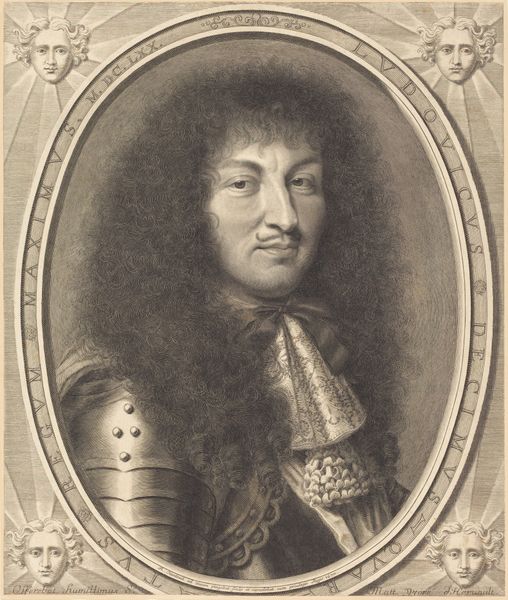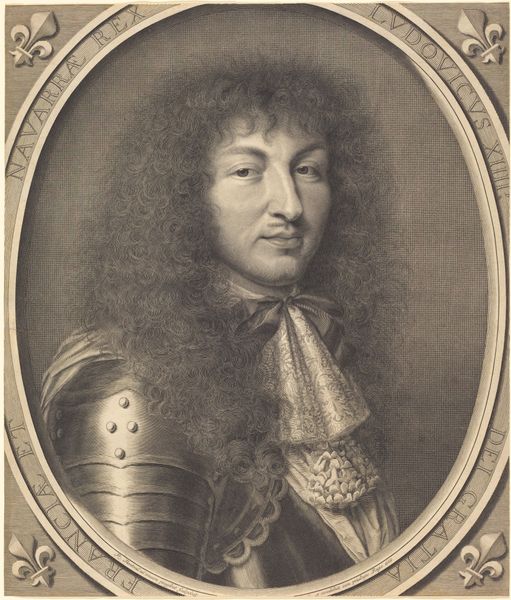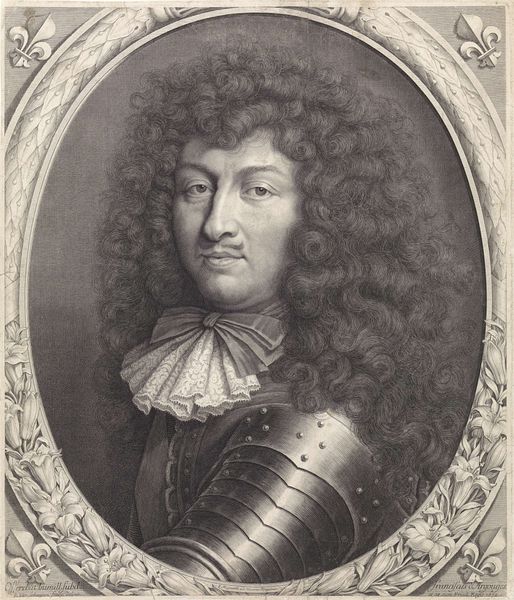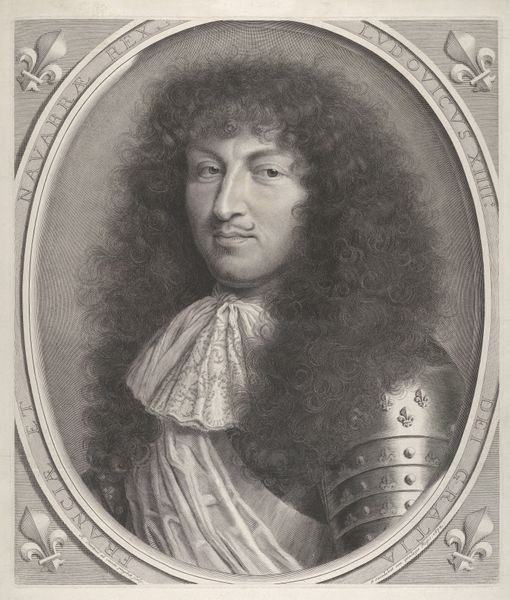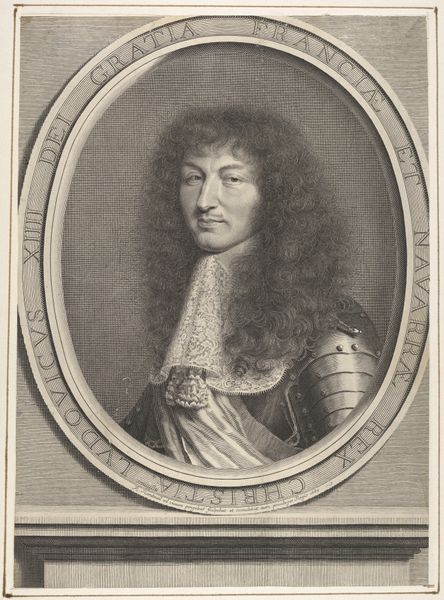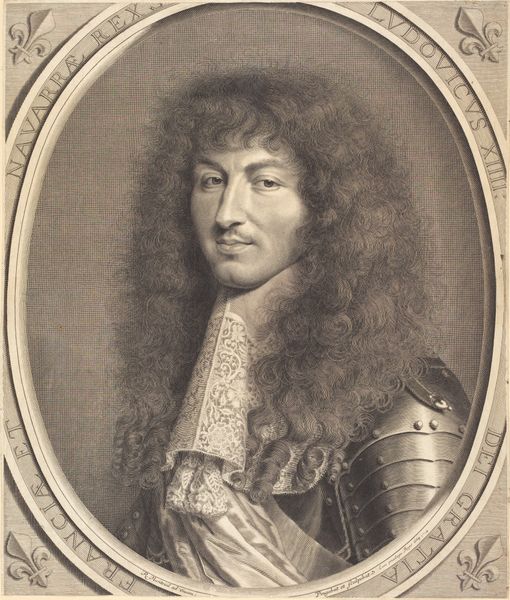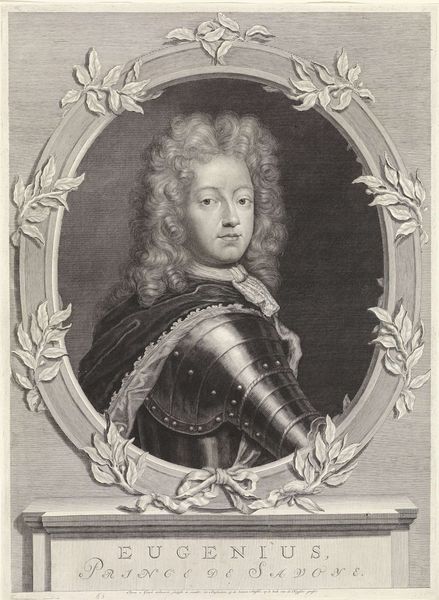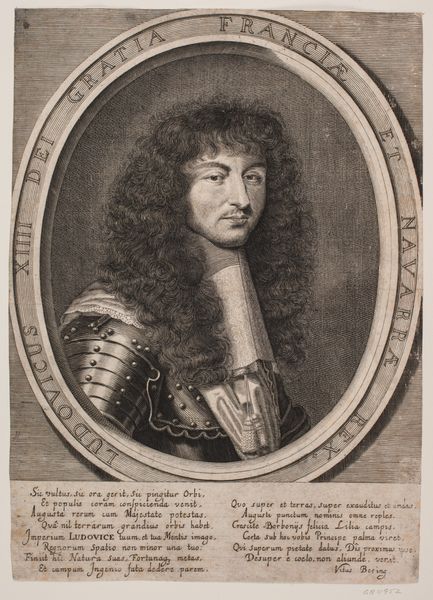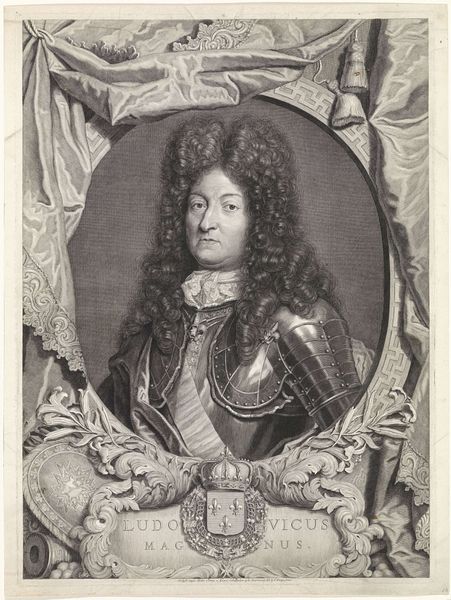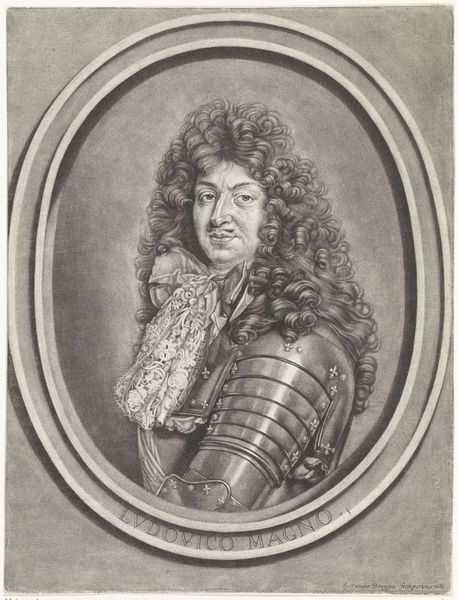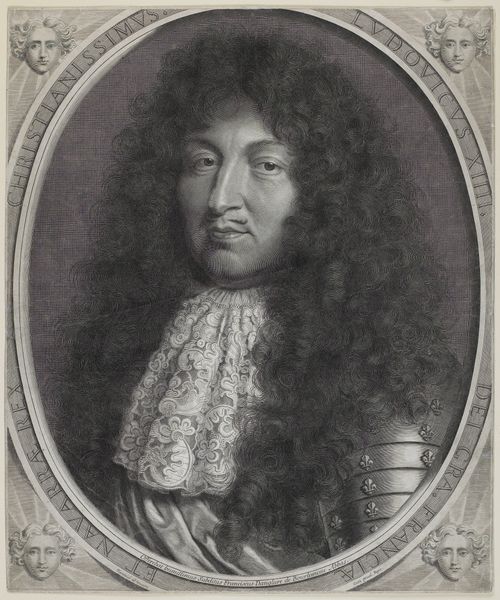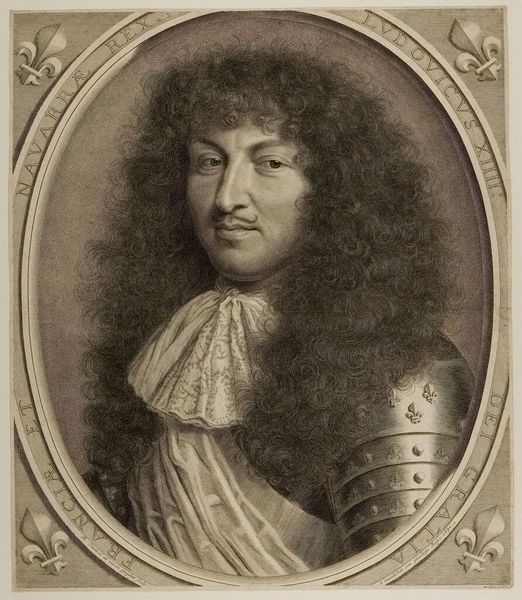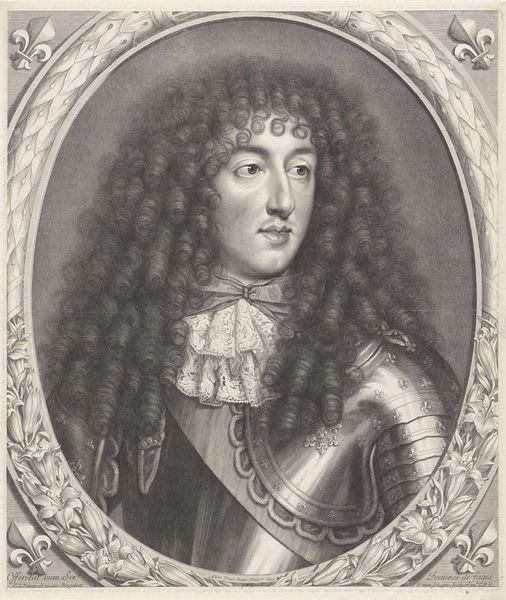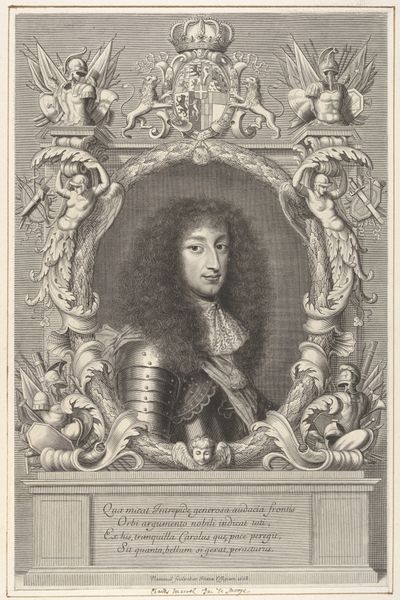
engraving
#
portrait
#
baroque
#
history-painting
#
academic-art
#
engraving
Dimensions: height 688 mm, width 583 mm
Copyright: Rijks Museum: Open Domain
Curator: Editor: Here we have Robert Nanteuil's engraving of Louis XIV, created in 1668. The detail is really striking, especially given the medium. What is your perspective on this piece? Curator: Well, let's think about what an engraving is: a series of carefully incised lines creating an image. Consider the labor involved in producing this image of Louis XIV, each line a deliberate act. The process highlights the material conditions of image production and circulation. It's not just about representing the king; it's about *making* the king through a very specific, labor-intensive process of printmaking for dissemination and, crucially, consumption. Editor: I see what you mean. So the act of creating the engraving itself becomes a commentary? Curator: Exactly! And let's not forget the context: Louis XIV was a master of propaganda. Images like these, multiplied and distributed, helped construct and maintain his power. But consider the material limits and potential for subversion inherent in printmaking. How might the engraver, in their choices of line and shading, negotiate the demands of royal portraiture and their own artistic agency, subtly questioning or reinforcing royal power through the very act of production? Look closely. Editor: That's fascinating! So instead of just seeing a portrait of a king, we should be thinking about the whole network of production and consumption. The role of labor! Curator: Precisely. It’s about seeing the work as a commodity and understanding how that material reality shapes its meaning. Editor: Wow, I'll definitely look at engravings differently from now on! It opens up a whole new perspective. Curator: It does, doesn't it? It shifts the focus from the king himself to the system that created and sustains his image.
Comments
No comments
Be the first to comment and join the conversation on the ultimate creative platform.
